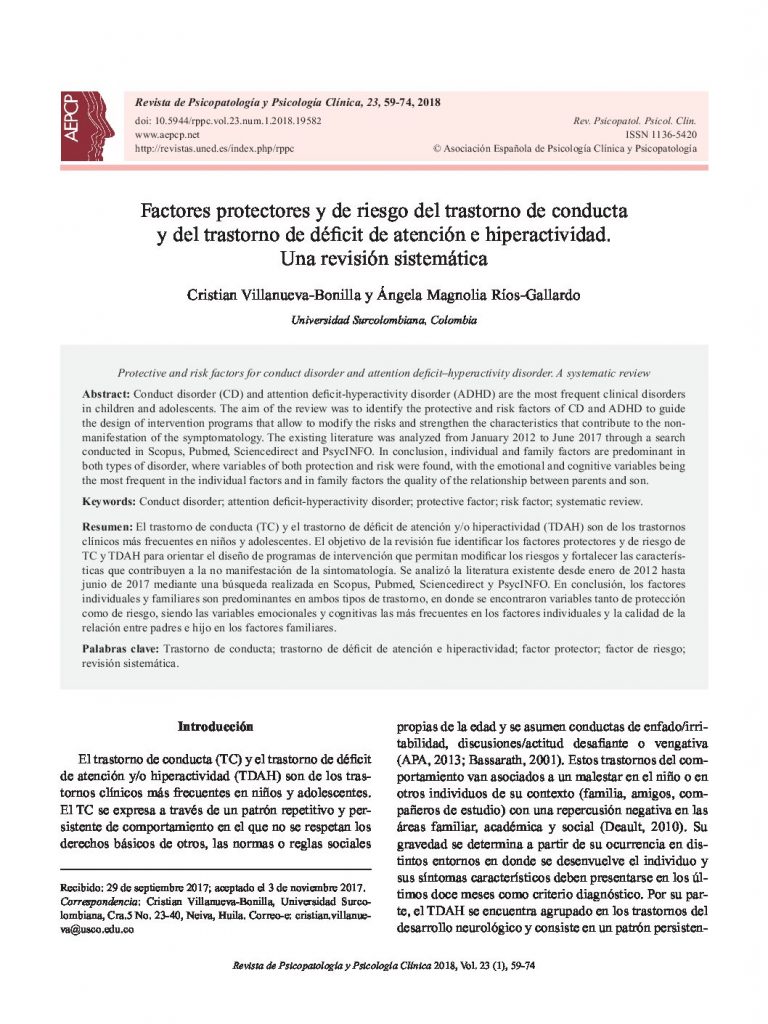Factores protectores y de riesgo del trastorno de conducta y del trastorno de déficit de atención e hiperactividad. Una revisión sistemática.

- Factores protectores y de riesgo del trastorno de conducta y del trastorno de déficit de atención e hiperactividad. Una revisión sistemática.
- El papel moderador de los estilos parentales en la relación entre la impulsividad y el consumo de alcohol en una muestra de adolescentes españoles.
- Type D personality, lifestyle habits, and cardiovascular disease risk: A mediational model.
- Association of overweight and obesity with psychological problems in school children.
- Adherencia al tratamiento y efectividad de un programa cognitivo conductual sobre la rumiación y expresión de la ira.
- Rasgos de personalidad y recursos psicológicos como predictores del bienestar emocional en adolescentes con y sin formación en escuelas de tauromaquia.
- Jesús Sánchez-Caro (2017). La enferma Teresa de Ávila. Burgos: Grupo Editorial Fonte.
Conduct disorder (CD) and attention deficit-hyperactivity disorder (ADHD) are the most frequent clinical disorders in children and adolescents. The aim of the review was to identify the protective and risk factors of CD and ADHD to guide the design of intervention programs that allow to modify the risks and strengthen the characteristics that prevent manifestation of the symptomatology. The existing literature was analyzed from January 2012 to June 2017 through a search conducted in Scopus, Pubmed, Sciencedirect and PsycINFO. In conclusion, individual and family factors are predominant in both types of disorder, where variables of both protection and risk were found, with the emotional and cognitive variables being the most studied in the individual factors and in family factors the quality of the relationship between parents and son.
El trastorno de conducta (TC) y el trastorno de déficit de atención y/o hiperactividad (TDAH) son de los trastornos clínicos más frecuentes en niños y adolescentes. El objetivo de la revisión fue identificar los factores protectores y de riesgo de TC y TDAH para orientar el diseño de programas de intervención que permitan modificar los riesgos y fortalecer las características que contribuyen a la no manifestación de la sintomatología. Se analizó la literatura existente desde enero de 2012 hasta junio de 2017 mediante una búsqueda realizada en Scopus, Pubmed, Sciencedirect y PsycINFO. En conclusión, el estudio de los factores individuales y familiares son predominantes en ambos tipos de trastorno, en donde se encontraron variables tanto de protección como de riesgo, siendo las variables emocionales y cognitivas las más estudiadas en los factores individuales y la calidad de la relación entre padres e hijo en los factores familiares.



